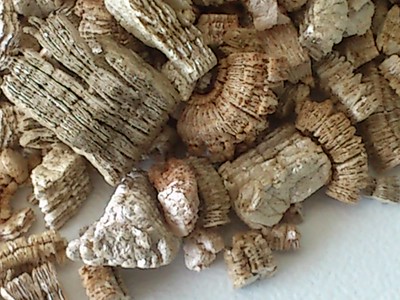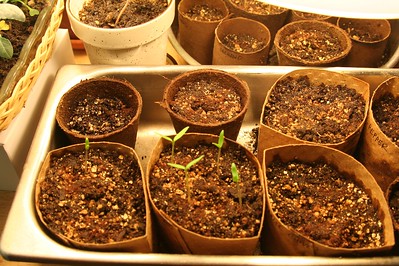Plants require soil aeration, nutrition, and water to thrive. If your garden soil is deficient in any or all of these areas, there’s something you can add to improve the soil structure – vermiculite. What is vermiculite and why should I use it as a growing medium?
Vermiculite is a naturally occurring mineral that has been used for over 80 years as an additive to potting soil. It is added to improve aeration and moisture retention of the growing medium. In addition, it adds beneficial minerals such as potassium and magnesium to plants which they can use for nourishment. How To Grow Vermiculite Fast?
Table of Contents
What Is Vermiculite?
Vermiculite is a mica-type mineral that expands when heat treated, forming beautiful flakes or “whirls” in the final product. When this occurs, vermiculite becomes a lightweight material with many uses around your home and garden area.
In a growing medium, it provides a light texture that allows oxygen into the root zone of your plants while improving water retention at the same time. It is often used in seed starting mixes and increases the soil’s water holding capacity by up to eight times its original weight.
The treated microscopic vermiculite particles are fluffed up like cotton balls allowing them to hold many times their dry weight in water. They also provide aeration to the growing medium. Vermiculite holds mineral nutrients that may be slowly released as the plant needs them, but it will not release these minerals rapidly like a chemical fertilizer.

Vermiculite Made-Up
Vermiculite is mined primarily for this purpose; however other uses include thermal insulation, lightweight fillers, floor tiles, paints and sealants, brake lining material for cars and other applications where heat resistance is useful.
Early on, research showed that plants grow faster with vermiculite added in place of peat moss. In fact, many have reported that their plants grew larger and faster simply by adding vermiculite to the soil mix.
In one experiment, tomato plant growth increased up to 50% when vermiculite was substituted for 25% of the peat normally used in potting soils! Since this discovery, many commercial potting soil companies have started including a small amount of vermiculite in their mixes.
Those who cannot find packaged potting soils with a high enough percentage may want to look into making their own using a good quality seed starting mix or composted bark fines. Some potting soils will advertise their percentages on the bag; however it’s always best to ask before you buy.
Vermiculite vs. Peat Moss
For years, non-renewable resources such as peat moss have been used to grow plants in containers. Although it has many benefits for the plant, peat is an organic material that contains no nutrients itself and must be replaced each year when potting plants. Vermiculite on the other hand, will not break down once added to your soil mix so you can reuse it over and over again in all of your gardening projects!
Regardless of how much vermiculite you add in with your soil mix though, it is important to thoroughly moisten soils before planting seeds or transplanting seedlings into them. Vermiculite holds approximately 8-10x its weight in water which is great for plants, but it also prevents the soil mix from properly draining due to the excess water retention.

How to Grow and Care for Peace Lily Plants & more
Flooding your container with a high-strength liquid fertilizer solution several times during the first week of growth will help ensure strong root development by eliminating any chance of plants becoming “root bound”.
Is Vermiculite Safe To Use?
As long as you purchase vermiculite that isn’t contaminated with asbestos (use only food-grade vermiculite), there’s no reason why you shouldn’t use this popular growing medium.
Some forms of vermiculite may contain naturally occurring asbestos fibers within it; however research has shown that heating these types of verulites to around 1200 degrees F, or letting them sit in a hot attic or sun-baked environment for an extended period will eliminate this problem.
Vermiculite suitable for use in potting soil mixes is carefully washed and processed to remove any impurities before being sold to the public. Asbestos contamination of vermiculite in commercial grades of vermiculite isn’t something that is new, but it’s one of many reasons why you should always purchase your growing medium from a trusted supplier.
Health Problems
Certain forms of vermiculite may contain naturally occurring asbestos fibers within it; however research has shown that heating these types of vermiculite to around 1200 degrees F, or letting them sit in a hot attic or sun-baked environment for an extended period will eliminate this problem.
It is a good idea to limit some of your activities, such as smoking or using a wood stove without proper ventilation when working with vermiculite based potting mixes because the dust from these types of mixtures can be harmful to your health if inhaled. In fact some people have been diagnosed with asbestosis due to prolonged exposure from working with vermiculite.
Uses Of Vermiculite
- Vermiculite has many overlapping uses with perlite, so if you cannot find vermiculite for sale at your local garden store, ask the owner if they can special order some for you.
- Perlite and vermiculite are used in commercial potting soil mixes because they expand when wet to approximately 10-15 times their original volume.
- This makes them great for increasing drainage and aeration around the roots of plants.
- Their use as a growing medium is what separates them from other types of potting soils such as peat moss mixed with sand or bark fines which will hold far less water than any of the aforementioned options.
Pothos Plant Caring, Common Names, Are Pothos Plants Poisonous & more
